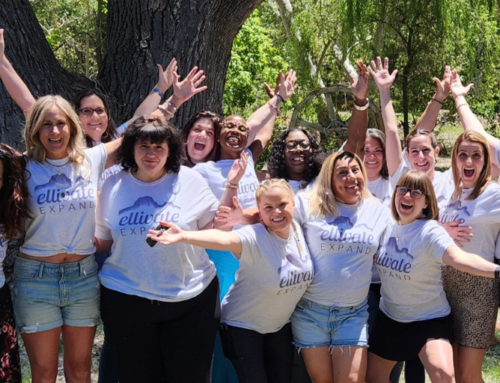
By Emily Soccorsy
Ellivate Alliance Dream Team Member
Co-founder, Root + River
Defier. Woman. Mother.
A friend was recently interviewing for a job. After completing the first interview, the committee told him the next interview would be with the team he would be leading.
He was surprised. “I think that’s a mistake,” he said. “What if as the leader you want to hire the candidate but then the team doesn’t like them?”
Another good friend chimed in in agreement: “Absolutely! That’s dumb! Why would you do that?”
I just smiled. It all made perfect sense to me.
Eventually, I traced my confidence in this approach back to my feminine strength and ability to connect.
The leader trusted her team. And she wanted to involve them in the process that would impact them every day of their working lives together. She valued their opinion, and she wanted to create buy-in. From my perspective, she was connecting by building consensus, empowering her people and sharing knowledge in a time when information is usually hoarded.
Both friends in question are evolved humans who believe in equality of the sexes. In this instance, both had immediate reactions (they later revised their positions) that unconsciously adhered to an old school, top-down management philosophy conveying the more masculine, authoritarian idea: “I’m the boss! I’ll decide who the right person to lead you is!”
Nah.
As women who are leaders, we can very easily fall into the same knee-jerk reactions, relying on the established playbook of business, one generated by a traditionally masculine, militaristic and manufacturing mindset, marked by siloed decision-making, authoritarianism and disconnection.

This trap is common, but it robs us of our opportunity to apply our great strength of connecting.
A feminine mindset gives us other ways of leading: with emotion and empathy, with collaboration – and with connection.
A feminine sensibility connects how hiring a new individual to lead a team is directly linked to the attitudes, to the spirit, to the productivity of not just the team in question, but the greater organization. A traditionally masculine fears loss of control or authority.
A feminine approach connects that the time you spend getting to know the people you work with is rewarded with discretionary effort and dedication. A traditionally masculine wonders how leisure time with employees gets the job done.
A feminine mindset connects that allowing employees or contractors to set their own hours, to take as much time as they need after the birth of a child or the death of a loved one is not only the right thing to do, it engenders deep loyalty. A traditionally masculine has become so embedded in avoiding emotional issues, it has no problem demanding a quick return – it’s the best way to “get over it,” after all.
A feminine sensitivity connects that differing opinions are just a part of working with a variety of humans, and they are welcome data to help her make better decisions. A traditionally masculine is primarily concerned that errant opinions, if not controlled or suppressed, might undermine or erode progress or power.
I have had the great fortune to work, again and again, for and with wonderful, whole, tender and kind leaders who combine masculine and feminine leadership abilities, and who were open to other ways of leading. For that, I will always be profoundly grateful.
But that’s not the point.
The point is as women and men who are ushering in a new age of leadership, we must own this third and infinitely powerful ability – the ability to connect emotional and relational dots, to connect people to the work they want to do, to connect how people feel to the kind of work they do to how hard they are willing to work.
And to connect with one another through Ellivate Alliance, so we may encourage one another and share knowledge.
Since the application of these abilities and this way of leading is still in infant stages, both men and women will push back.
Expect it. It’s not a sign you are leading incorrectly.
Give the resistors space, give them time, give them your empathy, give them their say – and then keep going.
Keep leading the way you feel instinctively you need to lead. With your heart and mind, by connecting all the dots.





